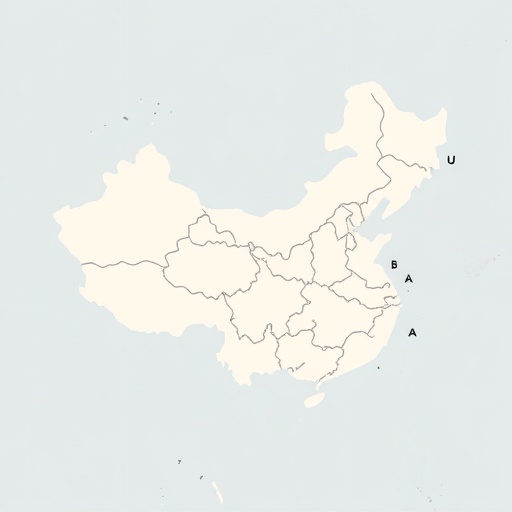
In a groundbreaking study published in npj Viruses, researchers have unveiled unprecedented insights into the complex interactions between giant viruses and their green algal hosts. This research sheds light on the ultrastructural transformations and transcriptional reprogramming that occur during infection, revealing not just how these colossal viral entities commandeer cellular machinery, but also how the host attempts to counteract these invasions at the molecular level. The results contribute significantly to the growing field of virology, particularly in understanding the ecological impact and evolutionary dynamics of giant viruses in marine environments.
Giant viruses, characterized by their large genome sizes and complex virion structures, represent a fascinating and somewhat enigmatic group of pathogens that challenge traditional virus definitions. Unlike typical viruses with minimal genetic material, these giant viruses possess genomes comparable in size to some bacteria, encoding a wide array of proteins that allow them to orchestrate sophisticated infection cycles. The study focuses on one such giant virus infecting a species of green algae, an ecologically critical group of photosynthetic organisms that form the basis of many aquatic food webs.
At the core of the investigation is the detailed examination of ultrastructural changes within the algal cells as the virus progresses through its replication stages. Using advanced electron microscopy techniques, the researchers captured high-resolution images showing dramatic remodeling of intracellular architecture. Early infection stages reveal viral particle attachment and entry, marked by envelope fusion and the injection of viral DNA into the host cytoplasm. As infection proceeds, the cytoplasm experiences the formation of viral factories—specialized compartments where viral replication and assembly are tightly coordinated.
.adsslot_I0vPRwm4QZ{width:728px !important;height:90px !important;}
@media(max-width:1199px){ .adsslot_I0vPRwm4QZ{width:468px !important;height:60px !important;}
}
@media(max-width:767px){ .adsslot_I0vPRwm4QZ{width:320px !important;height:50px !important;}
}
ADVERTISEMENT
The viral factories disrupt normal cellular organization, leading to the appropriation of host resources. Notably, the study observed the disintegration of chloroplast integrity, suggesting a viral strategy to impair the host’s photosynthetic capacity and redirect energy towards viral proliferation. The destruction of these organelles underscores the virus’s ability to induce host cell reprogramming on a bioenergetic level, effectively hijacking the metabolic pathways necessary for viral replication.
Accompanying the ultrastructural observations are comprehensive transcriptional analyses carried out through RNA sequencing (RNA-seq). This enables the researchers to quantify changes in gene expression, both viral and host-derived, throughout the infection timeline. The data revealed a biphasic transcriptional response: an early phase dominated by host antiviral defense genes, followed by a later phase where viral gene expression overwhelms the cellular transcriptome. This shift reflects a tug-of-war between host immune responses and viral evasion tactics.
Interestingly, during the early infection window, host cells upregulate genes involved in reactive oxygen species (ROS) metabolism and programmed cell death pathways—canonical defense mechanisms against viral assaults. However, as infection advances, viral transcripts encoding suppressors of host immunity sharply increase, indicating molecular countermeasures that facilitate immune evasion. This dynamic interplay illuminates the molecular arms race inherent in virus-host interactions.
Moreover, the giant virus possesses an expansive toolkit of auxiliary metabolic genes not typically associated with viral pathogens. These genes appear to modulate host biochemical pathways, including those regulating nucleotide biosynthesis, lipid metabolism, and protein translation. The strategic expression of these auxiliary genes hints at viral tactics to reshape the intracellular environment, maximizing the efficiency of viral genome replication and virion assembly.
The study further reveals temporal coordination in viral gene expression, where early genes govern host takeover and genome replication, intermediate genes orchestrate virion assembly, and late genes mediate host cell lysis and virion release. This tightly regulated transcriptional cascade parallels infection strategies observed in bacteriophages but occurs within the context of complex eukaryotic cells, emphasizing the adaptability of giant viruses.
Electron tomography techniques provided three-dimensional reconstructions of viral factory architecture, confirming that these compartments are densely packed with replicative intermediates and mature virions poised for release. The study hypothesizes that viral factories function to spatially segregate viral replication complexes from cytoplasmic defense factors, thereby insulating viral genomes from detection and degradation.
Importantly, the research underscores the ecological significance of these virus-alga relationships. Given the pivotal role of green algae in global carbon cycling and oxygen production, viral infections that disturb algal populations could have cascading effects on marine ecosystems and biogeochemical cycles. By elucidating the molecular underpinnings of these infections, the study provides a foundation for predicting and potentially mitigating impacts on oceanic primary productivity.
Beyond ecology, the findings highlight the evolutionary implications of giant virus-host dynamics. The large and versatile viral genomes suggest that gene exchange between host and virus has played a significant role in shaping the genetic repertoire of both entities over evolutionary timescales. Such horizontal gene transfer events may influence host adaptability and viral infectivity, fueling ongoing co-evolutionary processes.
This study also illuminates previously unrecognized cellular responses that green algae deploy against giant virus infection. The activation of stress response pathways, cytoskeletal rearrangements, and modulation of vesicular trafficking suggest a multifaceted defense strategy. However, the overwhelming viral gene expression and ultrastructural disruptions ultimately subvert host defenses, culminating in cell death and release of progeny virions.
In sum, this comprehensive investigation marries structural biology with transcriptomics to portray a vivid narrative of infection, unveiling how giant viruses commandeer green algal cells with remarkable precision. The methodologies employed—ranging from electron microscopy to high-throughput sequencing—demonstrate the power of integrative approaches in virology, offering granular insights not achievable through singular techniques.
Future directions emerging from this work include exploring the genetic determinants that confer susceptibility or resistance among diverse algal strains, as well as dissecting the biochemical mechanisms employed by viral auxiliary metabolic genes. A deeper understanding of these viral strategies not only advances fundamental virology but also informs biotechnological applications that may harness viral components for synthetic biology.
Collectively, the study contributes to a paradigm shift in how we perceive viral infections in photosynthetic eukaryotes, elevating giant viruses from obscure marine entities to pivotal players influencing ecosystem health and evolutionary innovation. As research progresses, the intricate dance between giant viruses and green algae will undoubtedly continue to reveal fascinating biological principles at the intersection of virology, cell biology, and ecology.
Subject of Research: Ultrastructural and transcriptional changes during giant virus infection in green algae.
Article Title: Ultrastructural and transcriptional changes during a giant virus infection of a green alga.
Article References:
Gajigan, A.P., Schvarcz, C.R., Conaco, C. et al. Ultrastructural and transcriptional changes during a giant virus infection of a green alga. npj Viruses 3, 47 (2025). https://doi.org/10.1038/s44298-025-00128-7
Image Credits: AI Generated
Tags: cellular machinery commandeered by virusesecological impact of giant virusesevolutionary dynamics of virusesGiant viruses in marine environmentsgreen algal host interactionsmarine virology and ecologyphotosynthetic organisms and virusesstudy of algal responses to viral infectionstranscriptional reprogramming during viral infectionultrastructural changes in algal cellsviral infection cycles in algaevirology research on giant viruses





